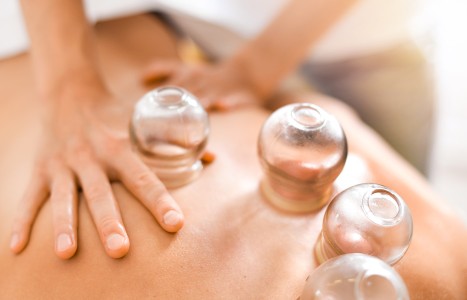Whether you accept it, avoid it or live somewhere in between, insurance coverage has become a defining issue for our profession. Patients increasingly expect to use their benefits, practitioners want to be compensated fairly for their time and expertise, and the system itself remains – at best – fragmented. The encouraging news is that coverage has expanded in meaningful ways. The challenging news is that reimbursement, across the board, remains inadequate.
Navigating the Intersection of Botox and Acupuncture in Bell’s Palsy Treatment
- Botox (botulinum toxin) works by temporarily paralyzing specific muscles, reducing wrinkles or addressing muscle overactivity.
- When Bell’s palsy occurred in this patient, Botox’s lingering effects (lasting 3-4 months) complicated acupuncture’s primary goal: stimulating muscle activity and nerve regeneration.
- Despite the challenges, the patient’s treatment plan focused on balancing her overall facial energy, stimulating nerve repair, and improving blood flow to the affected area.
A 60-year-old woman came to our acupuncture clinic with an unusual case. A few months after receiving Botox injections around her eyes for cosmetic purposes, she developed Bell’s palsy on the right side of her face. Her symptoms included facial drooping, difficulty closing her right eye, and impaired speech.
She sought acupuncture to regain facial balance and improve her nerve function. However, her prior Botox treatment presented a unique challenge: the muscle-relaxing effects of Botox conflicted with acupuncture’s goal of stimulating nerve and muscle recovery.
This case highlights the complexity of managing Bell’s palsy in patients with recent Botox treatments and explores how acupuncture can still play a pivotal role in their recovery.
The Role of Botox and Its Challenges in Bell’s Palsy Recovery
Botox (botulinum toxin) works by temporarily paralyzing specific muscles, reducing wrinkles or addressing muscle overactivity. In our patent case, the Botox injections around her eyes had relaxed the orbicularis oculi muscles, which play a crucial role in eyelid closure and facial symmetry.
When Bell’s palsy occurred, the natural weakness of the facial muscles compounded with Botox’s effects, making it difficult to assess the true extent of nerve dysfunction. Furthermore, Botox’s lingering effects (lasting 3-4 months) complicated acupuncture’s primary goal: stimulating muscle activity and nerve regeneration. The key conflict emerged because:
- Botox suppresses nerve activity in the treated area, while acupuncture aims to restore it.
- Overstimulating muscles already weakened by both Botox and Bell’s palsy risked creating unnecessary tension or imbalance.
- Acupuncture treatment needed to avoid disrupting the Botox-treated areas while still addressing facial asymmetry and nerve recovery.
Acupuncture Treatment
Despite the challenges, the patient’s treatment plan focused on balancing her overall facial energy, stimulating nerve repair, and improving blood flow to the affected areas without directly counteracting the Botox’s effects. Her treatment included the following strategies:
1. Acupuncture Points
Local Points: These points were chosen near, but not directly on Botox-treated areas:
- ST 4 (Dicang) and ST 6 (Jiache): Stimulate facial muscles and improve circulation to the cheek and jaw.
- LI 20 (Yingxiang): Supports nerve regeneration near the nasal area.
- GB 14 (Yangbai): Improves forehead muscle tone and helps with eye closure.
- SI18 (Quanliao): Targets local swelling and inflammation on the cheekbone.
Distal Points: These points supported systemic healing and nerve function:
- LI 4 (Hegu): Known for reducing facial pain and inflammation, located on the hand.
- ST 36 (Zusanli): Promotes overall circulation and boosts the immune response.
- LV 3 (Taichong): Calms the nervous system and promotes energy flow.
2. Scalp Acupuncture
Scalp acupuncture, particularly along the motor and sensory areas of the brain’s facial representation, was used to stimulate nerve repair and improve muscle activation.
3. Electroacupuncture
Low-frequency electroacupuncture was applied to specific points such as ST 4 and ST 6 to enhance muscle activation while avoiding overstimulation of Botox-treated areas.
Prognosis of Bell’s Palsy Treatment With Acupuncture
The patient underwent twice-weekly acupuncture treatments for eight weeks. While the Botox effects initially masked her true muscle strength, acupuncture helped in the following ways:
Short-Term Improvements (Weeks 1-4): Reduction in facial stiffness and inflammation; improved circulation to the affected side; gradual ability to close her right eye more effectively.
Long-Term Improvements (Weeks 5-8): Improved muscle tone and facial symmetry as Botox effects wore off; enhanced nerve responsiveness, with noticeable improvements in smiling and speech clarity.
By the end of the treatment course, the patient experienced a significant recovery, regaining over 80% of her facial function. Continued acupuncture was recommended monthly to address residual weakness and prevent complications such as synkinesis (involuntary muscle contractions).
Recommendations
This case underscores the importance of understanding the interplay between Botox and acupuncture when managing Bell’s palsy. While Botox can initially complicate nerve and muscle assessment, strategic acupuncture can still promote recovery without undermining the benefits of prior Botox treatment.
- Avoid directly targeting Botox-treated areas during its active phase (first 3-4 months).
- Focus on systemic points and unaffected areas to support overall nerve healing.
- Use gentle stimulation techniques such as scalp acupuncture or electroacupuncture to avoid overstimulating weakened muscles.
This patient’s journey illustrates the power of acupuncture as a holistic therapy for Bell’s palsy, even in the presence of complicating factors like Botox injections. With careful planning and a patient-centered approach, acupuncture can complement modern cosmetic treatments while addressing the root causes of nerve dysfunction. For patients like ours, it offers hope and a path to recovery when faced with the challenges of facial paralysis.



